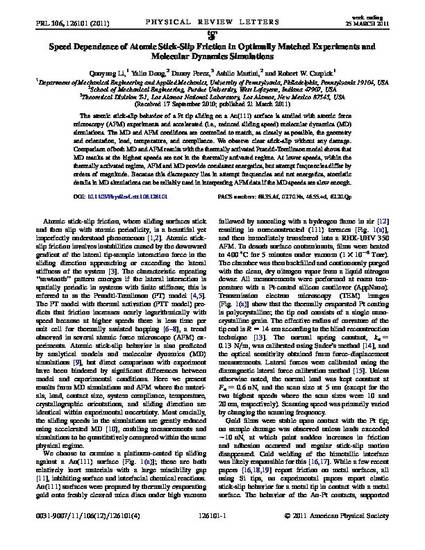
The atomic stick-slip behavior of a Pt tip sliding on a Au(111) surface is studied with atomic force microscopy (AFM) experiments and accelerated (i.e., reduced sliding speed) molecular dynamics (MD) simulations. The MD and AFM conditions are controlled to match, as closely as possible, the geometry and orientation, load, temperature, and compliance. We observe clear stick-slip without any damage. Comparison of bothMDand AFM results with the thermally activated Prandtl-Tomlinson model shows that MD results at the highest speeds are not in the thermally activated regime. At lower speeds, within the thermally activated regime, AFM and MD provide consistent energetics, but attempt frequencies differ by orders of magnitude. Because this discrepancy lies in attempt frequencies and not energetics, atomistic details in MD simulations can be reliably used in interpreting AFM data if the MD speeds are slow enough.
Available at: http://works.bepress.com/yalin_dong/3/

Suggested Citation:
Li, Q., Dong, Y., Perez, D., Martini, A. and Carpick, R.W. (2011). Speed Dependence of Atomic Stick-Slip Friction in Optimally Matched Experiments and Molecular Dynamics Simulations. Physical Review Letters. 106, 126101.
© 2011 American Physical Society
http://dx.doi.org/10.1103/PhysRevLett.106.126101